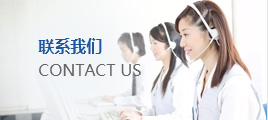Category: Technical support
Date: 2022-12-07
Click: 626
Author: admin
Collection:
Thermal insulation principle of aerogel thermal insulation cotton

Analysis of material heat insulation principle:
1. Aerogel thermal insulation cotton has the characteristics of high porosity, low thermal conductivity, and so on, thus achieving the ultimate in inhibiting heat conduction.
2. The pores of 50-60 nm aerogel make it impossible for air molecules to flow freely, and the convective heat transfer will be greatly suppressed.
3. One millimeter thick aerogel insulation cotton contains tens of thousands of layers of hole walls, which can be regarded as the reflective surface and refractive surface of radiation.
Introduction of aerogel insulation cotton material
Nano gel composite thermal insulation material is a kind of inorganic porous thermal insulation material with extremely low thermal conductivity, which is made by using the excellent thermal insulation performance of aerogel and special production process.
1. Unique nanostructures
The following figure (100000 times electron microscope photo) shows that the internal pores of the material are 50-80 nm, and the porosity of this material is up to 90%. Aerogel heat insulation cotton is different from traditional heat insulation materials. Compared with traditional heat insulation materials (glass fiber felt, aluminum silicate cotton), it can reduce the thickness by 3 to 8 times while achieving the same heat insulation effect
Material Science
Properties of aerogel insulation cotton:
1. Superior thermal insulation performance
The thermal conductivity can reach 0.015w/m · k at room temperature (25 ℃).
2. Good temperature resistance
Different series of this material can withstand the high temperature up to 600 ℃ - 1000 ℃, and the low temperature application range is close to absolute zero.
3. Unique flame puncture resistance
This material can withstand the direct burning of flame for a long time. In the flame far exceeding the upper limit of use temperature, this material will have a trend of thermal insulation degradation accompanied by sintering, but it will not have the situation of fusing and perforating of ordinary fibrous thermal insulation materials or fracture and crushing of porous mineral board thermal insulation materials.
4. Good chemical stability
It can withstand most acid and alkali environments except hydrofluoric acid and strong alkali for a long time without decomposition and deterioration. It can withstand various thermal radiation (ultraviolet light, infrared light, visible light) and electromagnetic radiation for a long time without degradation. It has an extremely long service life in a conventional use environment without replacement and maintenance.
5. Overall drainage for long-term use below 200 ℃
6. Low density bulk density can be designed between 180kg/m3-300kg/m3 as required.








